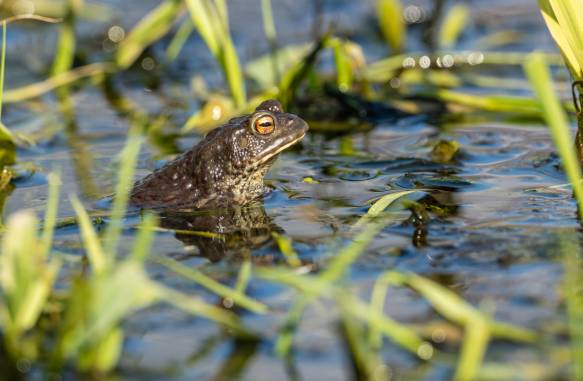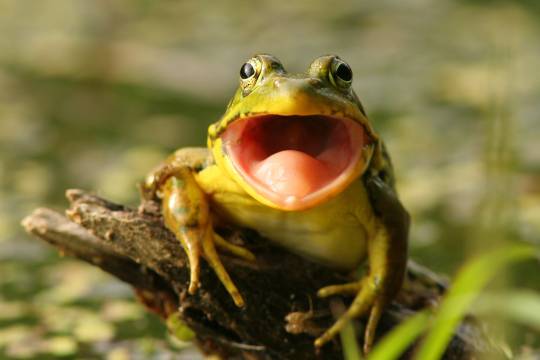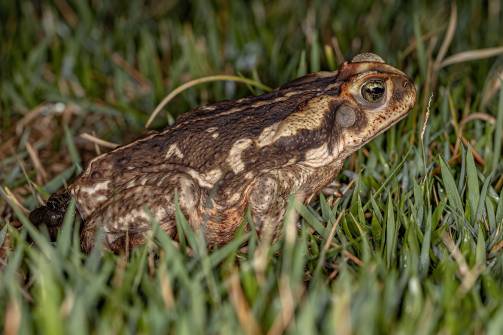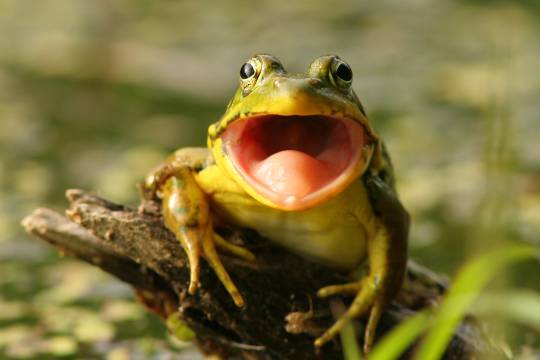Connect with a verified veterinarian in minutes. Licensed vets are available 24/7 to answer your questions. No need to worry about your furry family member.
This is a common question many people ask about toads! Toads are impressive animals and have some very unique attributes, but can toads breathe underwater?
If you’re a new toad pet parent, or you’re just curious about toads, then you’ve come to the right place! In this article, we’ll take a look at this and other questions about toads and their respiratory systems!
Let’s get started!
Can toads Breathe in Water?
The answer depends on the toad’s life cycle. For instance, toads go through a larval stage, which is called the tadpole stage. The process of changing from a tadpole to a fully formed toad is called metamorphosis.
As tadpoles, toads have gills, much like fish, which help them breathe in the water. However, tadpoles do not have external gills like a fish. Instead, they have internal gills that are under a covering called the operculum. The operculum forms over the external gills, so only a small hole remains. Tadpoles breathe through these holes as they progress through metamorphosis into adult toads.
As the toad matures, the internal gills will gradually stop functioning as the lungs take over. You can tell when a tadpole is using lungs rather than gills. That’s because the tadpole comes to the surface of the water more often. Plus, other parts of their body will be changing, which includes the development of their limbs.
However, toads also have other ways of breathing in the water!
Toads Can Breathe Through Their Skin in the Water
When the tadpole has changed into a toad, he will have lungs, just like we do. However, the toad will also have other ways to breathe! One of these is through his skin!
Toads, which are submerged in the water, can take oxygen from the water through their skin. This is because the skin is made of thin, membranous tissue that’s permeable to water. The skin also contains a large number of blood vessels. The thin skin of the toad allows for respiration, which means the skin can put off carbon dioxide from the toad’s body and take in oxygen. How wonderful is that?
Is that it? No! Toads can also breathe through their nostrils! You may have noticed toads that are partially submerged in a pond or lake. You see their nose and eyes above the water while the toad’s body is under the water. How is the toad breathing? Not only through his skin, but also through his nose! However, their lungs work differently than a human’s.
Humans have a diaphragm that works to take in and expel air. In other words, the diaphragm works like a bellows. When you breathe in, the pressure in the lungs decreases and air flows in. And it works just the opposite, too. The diaphragm increases the pressure in the lungs, which helps air to flow out.
Toads, however, don’t have a diaphragm. Instead, a frog has to keep his nose above the water and lower the floor of it mouth, causing the throat to expand. This works to open the nostrils and let air in. When the nostrils close, the air in the toad’s mouth goes into the lungs when the floor of his mouth is contracted.
But wait, there’s more! Toads also have a respiratory function in the lining of their mouths! This works to exchange gas (air). This method of breathing isn’t used as often—mostly when the toad is relaxed and sitting still.
When they’re in motion, frogs use their lungs for breathing. This is because they need more oxygen than when sitting still. When still, they may use their mouth or skin for breathing. They can also breathe underwater through their skin.

Review symptoms, medications & behavior to keep your pets healthy with a Vet Online in just minutes.
Ask a Vet Live NowCan Toads Drown in Water?
Yes, toads can drown in water. If a frog’s lungs become filled with water, the toad will not be able to breathe and will drown.
Even if they can breathe through their skin in the water, they may not be able to obtain enough oxygen to live. This is because the water may not have enough oxygen for the toad to survive.
For this reason, it’s always important to ensure your pet toad has a number of places where he can get out of the water. He can even drown in a dish of water if they get stuck.
Water Quality and Plants Also Affect Breathing
When it comes to toads, they’re complex little animals! As noted above, it is possible that a toad may be in the water and yet not have enough oxygen to breathe. So, what factors determine the breathability of the water?
Oxygen levels in the water can be affected by various things. For instance, if water becomes stagnant, it doesn’t have as much oxygen as freshwater. This is one of the reasons aquariums have a bubbling water source or a filter that oxygenates the water as it passes through.
Plants can also affect the oxygen level of water. If the toad’s habitat includes aquatic plants, you’ll need to consider how they raise and lower the oxygen level in the water. Aquatic plants put off oxygen during the daytime; however, during the day, aquatic plants remove oxygen from the water.
Why Do Toads Need Lungs & the Ability to Breathe Through Their Skin?
That’s also a complicated question! It can be confusing as to why toads need to have lungs, as well as the ability to breathe through their skin.
For one thing, toads aren’t able to breathe as much oxygen through their skin as they can through their lungs. When toads are on land, they’re usually hunting for food, running from predators, and more. This means they require more oxygen. This is when they need lungs. However, when they’re at rest in the water, they don’t need as much oxygen, which means their skin is enough to help them breathe.
Summing It Up
As you can see, toads are complex creatures who surprise us with the ability to breathe both underwater and on land! They have lungs but can also breathe through the skin. How great is that?
Connect with a verified veterinarian in minutes. Licensed vets are available 24/7 to answer your questions. No need to worry about your furry family member.

Julie
Julie is a graduate of the University of North Carolina, Wilmington, where she studied Animal science. Though contrary to the opinion of her parents she was meant to study pharmacy, but she was in love with animals especially cats. Julie currently works in an animal research institute (NGO) in California and loves spending quality time with her little cat. She has the passion for making research about animals, how they survive, their way of life among others and publishes it. Julie is also happily married with two kids.
Review symptoms, medications & behavior to keep your pets healthy with a Vet Online in just minutes.
Ask a Vet Live Now




